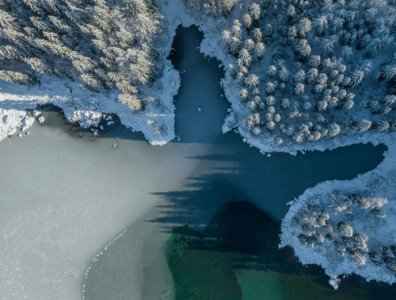Tourism sector facing the storm
The past few years have been like the perfect storm for New Zealand’s tourism sector.
Faced with growing public indignation over the impact of tourism on communities, the sector suddenly and dramatically came to a standstill when the borders closed, and the country locked down. And while trying to weather that storm, a series of actual weather events became a stark reminder about climate change’s impact on tourism.
While jobs have been lost and some companies have closed or paused, the positive industry players saw a silver lining: a chance to refocus from driving visitor numbers to a more sustainable, renewable model.
Boards have been addressing climate change issues for a while, but it was this perfect storm that accelerated action with companies taking the dramatic slowdown of international visitors to work on tackling this colossal issue for themselves and, in turn, reframing the future of the sector.
Queenstown’s Skyline Chair Jan Hunt says when visitor numbers were at a peak, it wasn’t easy to focus on a long-term sustainability strategy.
“Covid made it easier for us to get going. When zero visitors are your baseline, you can really think hard about what you’re doing and how you’re doing it.”
“Pre-Covid we’d started our sustainability story, but it was in the background while we dealt with the day-to-day. And when every day you’re selling multiple seats and dinner, it is very hard to explain to shareholders that we need to change how we do business.’’
One region that had been working on sustainability for some time was the Bay of Plenty.
Like many parts of New Zealand, the region’s tourism offering is intimately connected to the natural environment so several years ago the region’s tourism body started to investigate and understand how they could adapt to a sustainable experience.
Tourism Bay of Plenty Board Chair Laurissa Cooney says they committed to a strategy supporting Regenerative Tourism and board members did their own professional development to understand what a ‘nature based’ solution would look like.
“We could see what was coming and with our offerings, if we didn’t look after the environment – what would we have left?”
“Understanding what a regenerative strategy could look like allows our board to support management, as well as working with our many stakeholders: iwi, local government and the industry to explain our approach and take them on the journey with us.”
Nationally, there has been no shortage of sustainability initiatives for the industry: the Tiaki promise, the New Zealand-Aotearoa Government Tourism Strategy, the Aotearoa Circle Adaptation mahi and Tourism Industry Aotearoa’s Tourism sustainability commitments.
Expecting an industry in survival mode after suffering brutal financial losses may have been a big ask, but tourism governors believe there was no choice but to address climate change as customers, other industry operators, banks, insurance companies and the Government are all requiring the sector to deliver sustainability initiatives.
Chair of Tourism Industry Aotearoa, Grainne Troute says the sector was ready and willing.
“What blew me away, even in the darkest times, was that operators were willing to focus on sustainability, I thought they might shut the door on this opportunity.
“We know that international tourists are aware they’ve burned a lot of carbon to get here, so when they arrive, they are seeking the opportunity to have their experience in a sustainable way.”
Hunt says the impetus to address climate change has come from all fronts.
“Inbound operators want to know what we’re doing to meet customer expectations; our younger staff understand the importance of it and underneath all that is a push from Government.”
She says what has also changed has been the relationships with stakeholders including banks who are under pressure to make sure they’re lending money to sustainable companies, insurance companies who need to see the sector is protecting land and property and a big push to develop the industry to be a sustainable career for staff.
Troute says TIA has worked to provide leadership and advocacy for members.
“Many of our members are SMEs so we help them answer questions like: ‘how do I get started, how do I measure carbon? And how do I prioritise key opportunities?’
TIA has set a Tourism Carbon Challenge which Troute says is unlike anything normally done from a governance perspective.
“It requires courage to commit to an objective even though we don’t know how we’re going to get there. The solution will be different for every organisation as they face different challenges.”
The risks of not taking a sustainable approach to tourism are fundamental to the physical nature of the sector. This includes the inability to maintain New Zealand as an attractive destination, a reduction in days and opportunities and an inability to access attractions and locations due to weather events, and a loss of species and biodiversity.
But there are also what the industry is calling transitional risks, such as a reduction in customer sentiment, an inability to keep up with the rate of change and an increase in climate regulation, which will drive up the cost to visitors.
What is repeated constantly among our tourism leaders are the words ‘’caring for our people, our place and our culture”. It’s all about balance between community, environment and sector needs.
After all, as the latest Air New Zealand safety video says “we don’t inherit the earth from our ancestors we only borrow it from our children”.



